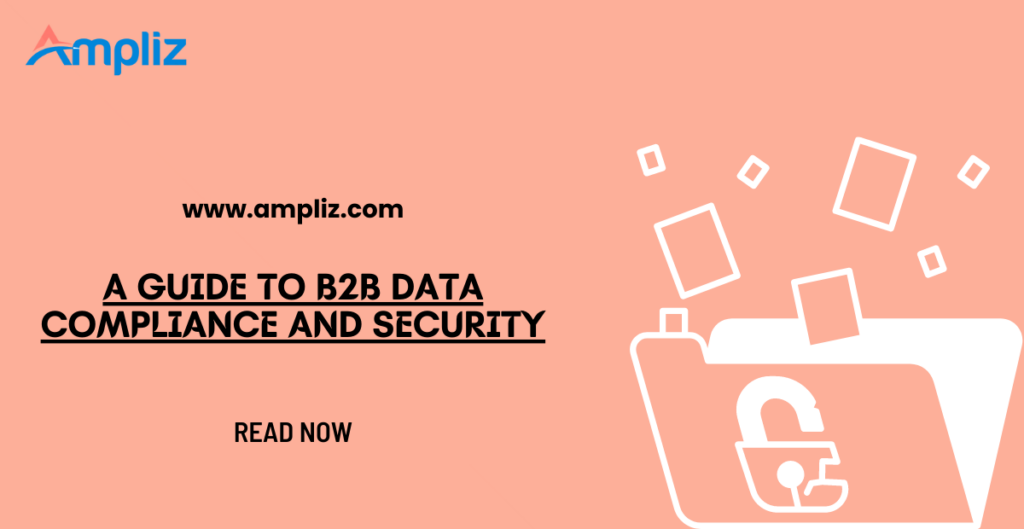Data is the royalty. Be it digital or legacy brands. As a B2B data provider, you are dealing with sensitive information of various companies, stakeholders and your own company as well.
Cybercrime is on the rise. According to IBM’s latest Cost of a Data Breach Report, 83% of organizations experienced more than one data breach during 2022. Thus, it is becoming increasingly important to ensure that all data is safe, secure and accessible only to those who need it.
Today, we provide you with the necessary resources to protect your data and your business.
What Is B2B Data Compliance?
Data compliance is like being the responsible chaperone on a kids’ field trip – making sure everyone follows the rules and stays safe while having a great time. But unlike planning a field trip, ensuring compliance isn’t just a box-ticking exercise; it’s the key to building trust with your partners and clients.
Regulations such as General Data Protection Regulation (GDPR), Health Insurance Portability and Accountability Act (HIPAA) Privacy Rule, Payment Card Industry Data Security Standard (PCI DSS) & California Consumer Privacy Act (CCPA) set the rules for securing personal data. Enforced by various different authorities across the globe, the above help companies create and maintain a culture of data security and privacy.
Moreover, ignoring compliances can result in hefty fines, and reputational damage, and invite potential legal action. For example, a GDPR violation may lead to fines of up to 4% of your global annual revenue, along with internal and external backlash.
What Are The Different Types Of B2B Data?
There are 3 major types of B2B data:
1. Personal Data
Personal data refers to information such as names, emails, phone numbers, and job titles of your employees, clients and vendors. It facilitates smooth communication and collaboration between all stakeholders, especially your partners and clients. Companies must be compliant when dealing with personal data, and cookie banners inform users how you intend to process their information.
2. Financial Data
Financial data includes sensitive information like billing details, payment records, employee salaries, provident fund payments and other financial transactions. It is responsible for facilitating smooth transactions, timely payments, and accurate accounting, thereby streamlining your business processes and enhancing financial stability.
3. Sensitive Business Data
Sensitive business data refers to information that is crucial to a company’s survival and success, such as trade secrets, intellectual property, and confidential business strategies. Unauthorized access to the same could lead to loss of intellectual property & competitive advantage.
Common Data Security Threats
Here are some of the most common data security threats in the B2B landscape:
1. Ransomware
It refers to malicious software that encrypts your data, demanding a ransom for the decryption key to restore access. Such cyber-attacks spread quickly through networks, causing extensive disruption across multiple systems. The impacts include significant downtime, halting business operations, and financial losses. Implementing a Virtual private network (VPN) can add a layer of security, as it encrypts internet connections and obscures IP addresses, potentially reducing the risk of such cyber-attacks.
However, paying the ransom does not guarantee data retrieval and may even attract future attacks, especially without regular internal penetration tests.
2. Phishing & Social Engineering
Phishing emails and social engineering aim to deceive employees into sharing sensitive information like login credentials or financial details by impersonating trusted entities. Falling victim to these attacks can cause data breaches, potential financial fraud, and reputation damage. To mitigate these risks, using a phishing link checker can help identify malicious links before they can be clicked, protecting users from inadvertently compromising their security.
3. Insider Threats
It refers to the misuse of authorized access to data by current/ former employees, contractors, or partners, intentionally or unintentionally. Such threats can result in data theft, sabotage, or exposure of sensitive information, leading to financial losses, and legal repercussions.
4. Lack Of Encryption & Secure Data Storage
Failing to encrypt official data makes it vulnerable to unauthorized access and manipulation such as financial fraud, identity theft, and unauthorized privileged access. Thus, without proper encryption and secure data storage, your information and intellectual property are at severe risk, with repercussions ranging from regulatory penalties to class-suit actions based on the severity and impact of a data breach.
Pro Tip: Conducting a quarterly internal penetration test can help discover such failures of encryption before a hacker leverages the same to disrupt your business operations.
5. Weak Access Controls
Weak access controls such as ineffective password management, lack of Multi-Factor Authentication (MFA), or inadequate user permissions, enable attackers to exploit vulnerabilities and gain unauthorized access to your systems and data and unauthorized data modifications. Ensure seamless data security and protection by utilizing reliable datacenter proxies, safeguarding sensitive information during online transactions and communications.
Incorporating systems that streamline and secure user identity management becomes crucial in addressing weak access controls. One effective strategy lies in exploring the benefits of integrating SCIM, which not only enhances security but also simplifies user provisioning and deprovisioning processes. By leveraging such mechanisms, companies can significantly reduce the risks associated with inadequate user permissions while promoting a more efficient, standardized approach to access control.
Best Practices For B2B Data Compliance
Here are some nifty best practices to keep your data safe and sound:
1. Establish Clear Guidelines
Create clear guidelines for data collection to ensure you only gather what’s necessary and relevant. Use robust encryption methods to secure data during transmission and at rest to ensure proper storage. Encryption acts like a digital lock by making information unreadable and illegible to unauthorized individuals. This approach maintains a lean and secure data environment, reduces potential risks, and ensures compliance with regulations. Apart from this, companies, especially in the fintech sector, can collaborate with identity verification companies to ensure the highest end-to-end industry-standard encryption and compliance with industry standards.
Pro Tip: Keep a check on emerging digital threats of new malware and digital weaknesses along with changing legal requirements such as data retention policies and updated compliances to avoid unnecessary penalties. Additionally, consider leveraging advanced AML software recommendations to enhance your data security framework, ensuring compliance with industry standards and protecting against financial fraud.
2. Audit & Organize Data
Regularly conduct data audits to identify potential vulnerabilities, inconsistencies, and redundant information. An ideal audit encompasses a complete vulnerability scan, an internal penetration test, a data integrity evaluation, an access control review and a data lifecycle assessment.
Moreover, organizing and categorizing your data based on sensitivity and importance helps prioritize and apply necessary security measures effectively. For an additional layer of protection, consider using data broker removal services to ensure that sensitive information doesn’t fall into the hands of unauthorized parties.
3. Establish Vendor Management Protocols
Implement thorough vetting procedures for third-party vendors and partners, ensuring they meet data protection standards and are committed to compliance.
Include data protection clauses in your contracts to hold them accountable for any mishandling of data. Trustworthy and reliable vendors help foster a secure ecosystem for data exchange.
4. Conduct Regular Employee Training
Hold exhaustive security training for all employees, contractors, and partners who have access to official information.
Educate them about data handling best practices, how to recognize and respond to potential security threats, and the importance of compliance. A well-informed team is your first line of defense against data breaches and human errors.
Conclusion
Thus, given the rising threat of cybercrime and the potential consequences of non-compliance, safeguarding B2B data has become more critical than ever. Moreover, by adhering to regulations and implementing best practices such as robust encryption, regular data audits, and thorough employee training, you can fortify your data security and preserve your reputation in the digital landscape.



